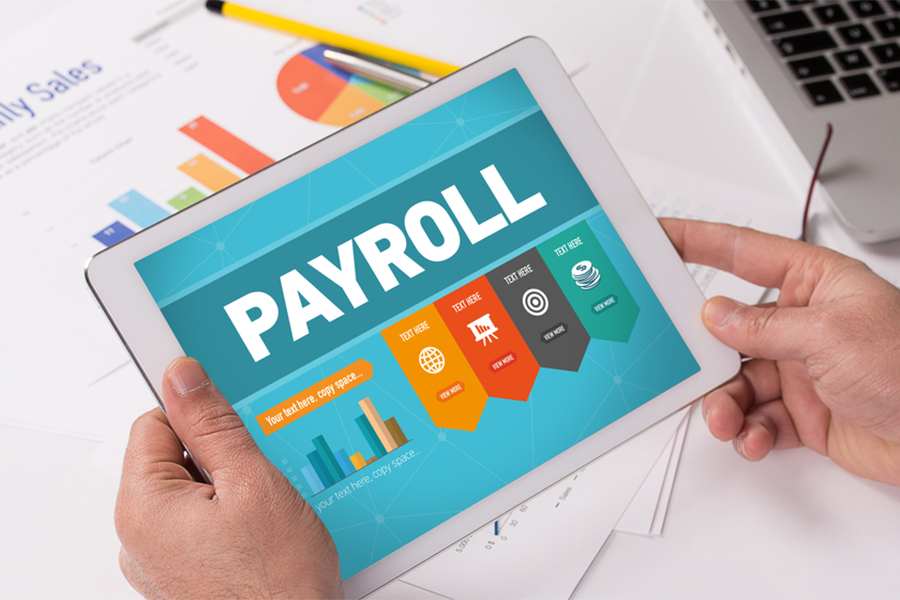The Federal Insurance Contributions Act (FICA) tax generates funds for the Social Security and Medicare programs and is imposed on both employers and employees. The total tax rate is 15.3% of the employee’s gross earnings, where you and your workers each pay 6.2% for Social Security tax and 1.45% for Medicare tax.
Key Takeaways:
- FICA taxes are automatically deducted from employee paychecks.
- Employers remit their and their employees’ FICA taxes via the Electronic Federal Tax Payment System (EFTPS).
- For 2025, the maximum taxable wages for Social Security tax is $176,100.
- For the Medicare tax, there isn’t a taxable wage limit.
If you’d prefer to not have to calculate and pay FICA taxes yourself, consider using a payroll software like Gusto. It automatically calculates, remits, and files FICA and other payroll taxes so you can focus on running your business. Sign up for a plan today.
FICA Taxes: What to Pay
Employees and employers share the total tax burden of Social Security and Medicare taxes. Half of the FICA tax amount owed is paid by the employer and the other half is withheld from an employee’s paycheck.
Both employer and employee pay an equal amount of Social Security and Medicare taxes, totaling 15.3% of the employee’s gross earnings.
- Social Security tax (12.4% total): 6.2% is withheld from employee paychecks and the remaining 6.2% is paid by the employer. The tax is paid on wages up to $176,100 for 2025.
- Medicare tax (2.9% total): Employees’ share of 1.45% is withheld from their paychecks while the employer pays the remaining 1.45%. There is no income cap on Medicare taxes.
As an employer, it is your responsibility to remit both the employee share and your share of FICA tax on time. Deducting FICA properly is extremely important, so it’s vital that you understand the process while doing your payroll.
All payroll taxes that are paid by the employer, as well as taxes withheld from employee paychecks such as employer FICA tax, are reported on Form 941 and filed quarterly. Let’s now take a look at how to calculate FICA tax owed, how to make payments, and the due dates you must adhere to, plus penalties for not paying or paying late.
How to Calculate FICA Tax
Now that you know the answer to the basic “what is FICA tax” question, the next step is understanding how to compute it. While you and your employees equally share in the Social Security and Medicare taxes, the FICA tax calculation for both is slightly different.
Social Security Taxes
This portion of the FICA taxes has a tax wage limit, which means that once an employee’s gross wage has reached the threshold, no additional Social Security is deducted for the remainder of the year. Since your tax amount must match the employee’s, you would also have no additional Social Security liability for the remainder of the year.
Note that the Social Security tax wage limit can change every year. For 2025, this is $176,100. Ensure that you check announcements from the Social Security Administration (SSA) from time to time.
If you’re interested in seeing the tax wage limit adjustments from previous years, below is the summary of Social Security wage limits from 2020 to 2024.
Year | Social Security Wage Limit |
|---|---|
2020 | $137,700 |
2021 | $142,800 |
2022 | $147,000 |
2023 | $160,200 |
2024 | $168,600 |
Social Security Tax Example
Let’s recap. For this federal payroll tax, the total tax rate is 12.4% of the employee’s gross wage, with you and your workers each paying 6.2%.
Let’s assume that one of your employees earns $2,000 per pay period. The Social Security tax calculation would be as follows:
$2,000 × 0.062 or 6.2% = $124
In this example, you would deduct $124 from this employee’s gross pay for Social Security tax each pay period. Since the employer tax must equal the employee Social Security tax, your share would also be $124. Thus, the total Social Security tax payment that you would submit to the IRS for this employee (for this pay period) would be $248.
Medicare Taxes
There is no wage cap when it comes to Medicare taxes. What this means is that regardless of the amount of wages an employee earns, Medicare taxes must be paid on the entire amount.
Medicare Tax Example
The total rate for this federal payroll tax is 2.9%. Similar to Social Security taxes, the employer will have to match the employee’s share of 1.45% equally.
Using the same employee who earned $2,000 per pay period, let’s calculate the Medicare tax:
$2,000 × 0.0145 or 1.45% = $29
In this example, you would deduct $29 from this employee’s gross pay for Medicare tax. Since the employer tax must equal what the employee Medicare tax is, your share as an employer would be $29. Thus, the total Medicare tax payment that you would submit to the IRS for this employee (for this pay period) would be $58.
FICA Tax Calculator
Still unsure how to calculate FICA tax for one employee? Use this online calculator.
FICA Tax Due Dates
FICA tax due dates are dependent on your “lookback period.” Depending on your total FICA tax liability during this period, you’ll either have to pay FICA tax monthly or semiweekly. If you have less than $50,000 in tax liability during your most recent lookback period, you pay monthly, and if you have more than $50,000, you pay semiweekly.
How to Determine FICA Tax Lookback Period
Let’s say today is Jan. 1, 2025, and you need to determine when you are required to deposit your tax payments moving forward. You’ll either have to pay monthly for the previous month’s employer FICA tax owed or semiweekly for FICA tax owed the previous two weeks. These three steps will help determine your lookback period:
1. Check Your Form 941 or Form 944 Lookback Period
Most employers use Form 941 to report wages and taxes on a quarterly basis. If you’re a Form 941 filer, the lookback period starts and ends in the middle of two calendar years, specifically from July 1 to June 30. For example, for the year 2025, your lookback period would be July 1, 2023, through June 30, 2024.
On the other hand, if you use Form 944 to file wages and taxes annually, your lookback period covers one calendar year. For example, for the tax year 2025, your lookback period is from January 1 to December 31, 2024.
2. Get Copies of Form 941 (or Form 944) Filed
This should include forms filed for the lookback period. For Form 941 filers, the tax forms should cover the following quarters:
- Quarter 3 2023 (July 1 to September 30, 2023)
- Quarter 4 2023 (October 1 to December 31, 2023)
- Quarter 1 2024 (January 1 to March 31, 2024)
- Quarter 2 2024 (April 1 to June 30, 2024)
3. Add Up the Tax Liability on Line 10 of Each Form 941
NOTE: Since most businesses don’t use Form 944, this step will focus on Form 941.
If your total tax liability for all four quarters is $50,000 or less, you must deposit your taxes on a monthly basis. Monthly taxes are due by the 15th day of the following month. On the other hand, if your total tax liability is more than $50,000, you must deposit your tax payments on a semiweekly basis. Semiweekly tax payment due dates are based on what day of the week your payday took place.
The exception to this is if your total taxes (on line 10) for the current quarter or the preceding quarter are less than $2,500. In this case, you do not have to make a deposit. Instead, you can send in your payment when you file your Form 941.
If you are a new employer, then you are automatically considered a monthly depositor since your tax liability for the lookback period would be zero.
FICA Tax Payments: Deposit Schedules & Due Dates
Now that you know how to determine FICA and the applicable lookback period, let’s tackle the due dates. As mentioned in Step 3 of the above section, your deposit schedule can be on a monthly or semiweekly basis depending on your total tax liability.
Below is a summary table of each type of deposit schedule, along with the due dates for tax payments:
Monthly Deposit Schedule | Semiweekly Deposit Schedule |
|---|---|
If you reported $50,000 or less in taxes during the lookback period, you must make monthly payments to the IRS. | If you reported more than $50,000 of taxes during the lookback period, then you must make semi weekly payments to the IRS. |
Payments are due by the 15th day of the following month. | Depending on what your employee payday is, your tax payments will be due as follows:
|
How to Make FICA Tax Payments
If you are a monthly or semiweekly depositor, then payments must be submitted electronically through the Electronic Federal Tax Payment System (EFTPS). Submitting payment via mail is not an accepted option.
The payments you submit should include income taxes withheld from all employee paychecks and both your portion and the employee’s portion of Social Security and Medicare taxes.
If you are not required to make payments during the quarter, you can mail payment with your Form 941 or submit it through the EFTPS.
FICA Tax Penalties for Late Payments
If you don’t deposit your payments on time or when you are required to do so, or your deposit is for less than the required amount, then you may have to pay a penalty of 2% to 15%. While penalties for late FICA tax payments are subject to a one-time charge, interest will accrue each day until the outstanding tax payments are made.
Below is a summary table taken from IRS Publication 15 of the penalties that you may be required to pay based on the number of days your payment is late.
Number of Days Late | Penalty |
|---|---|
Deposits made 1-5 days late | 2% |
Deposits made 6-15 days late | 5% |
Deposits made 16 or more days late, but before 10 days from the first date of the first notice sent by the IRS requesting payment | 10% |
10% | |
Amounts still unpaid more than 10 days after the date of the first notice sent by the IRS requesting payment or the date you received the notice demanding payment (whichever is earlier) | 15% |
Frequently Asked Questions (FAQs) About FICA Taxes
Employers and employees are paying FICA taxes to fund Social Security and Medicare programs that provide benefits to the disabled, children and surviving spouses, retirees, and eligible individuals who paid applicable FICA taxes.
Yes, FICA tax is mandatory for US wage earners and employers.


